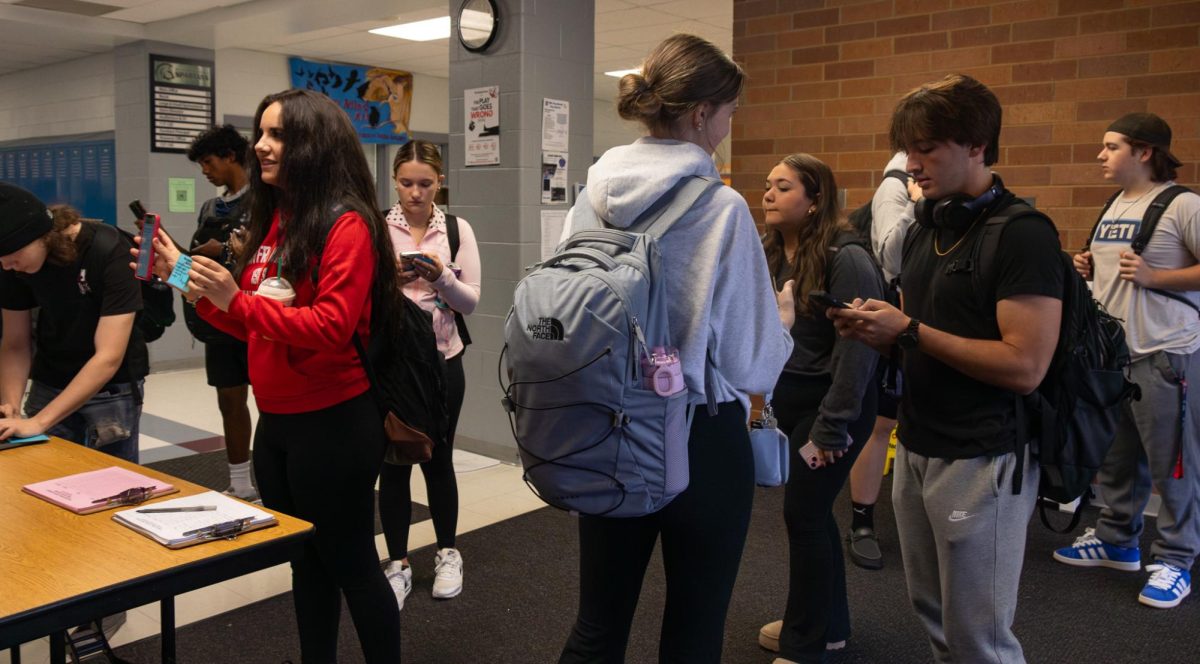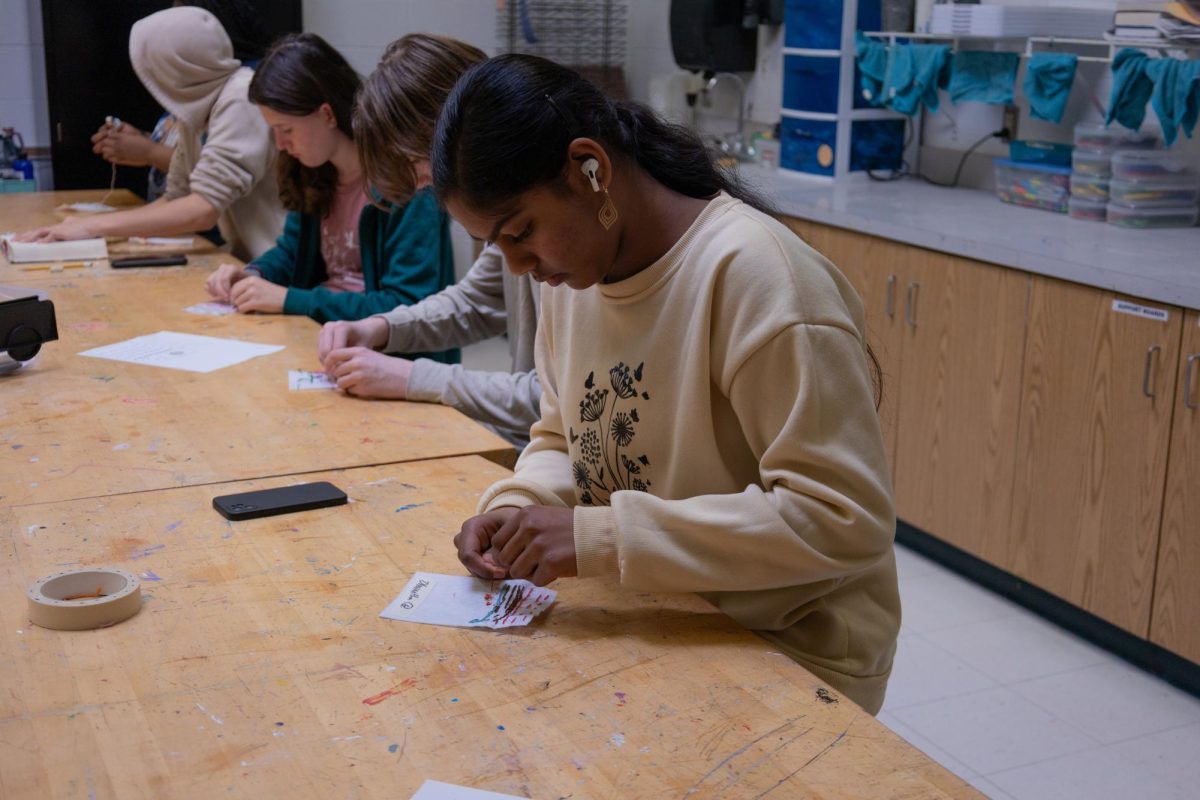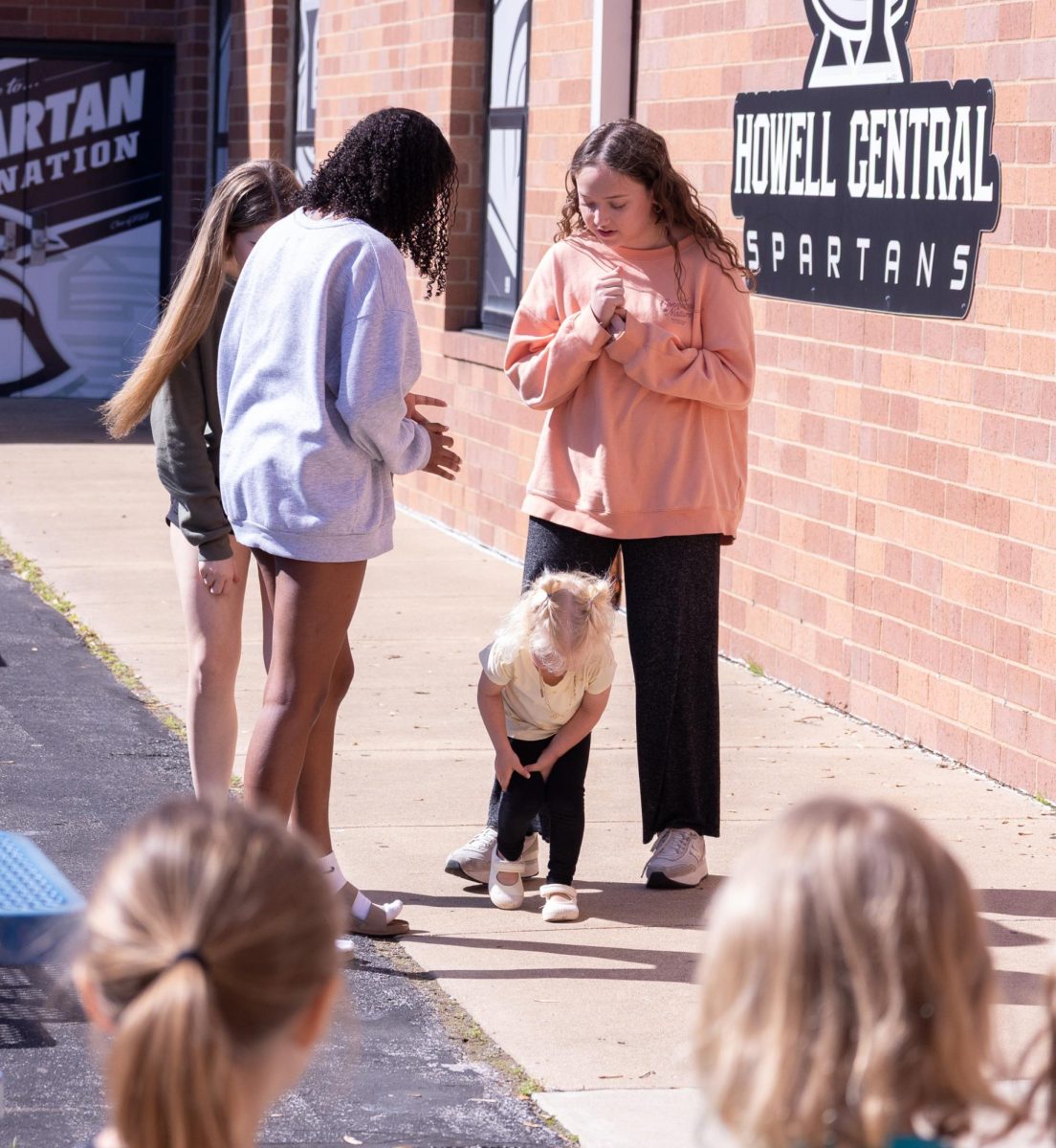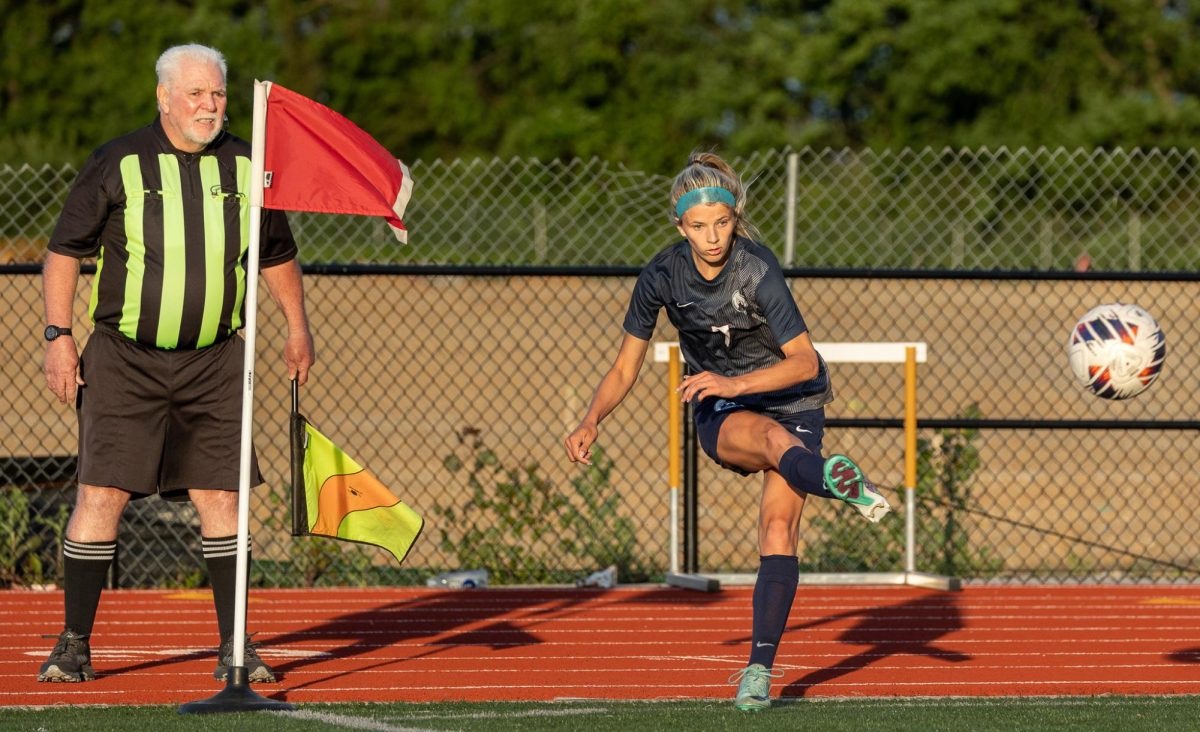Although school is in session, senior Gavin Schlatter is not in class and yet he is still marked as present. He sits on a bench beside the sand volleyball court at Legacy Park, his finished math work on his lap. Only halfway through fifth period, he puts his schoolwork back into his bag before playing a few games of volleyball. To an outside view, it may seem as though he is skipping class, but the school is both aware of and encourages this for certain students.
Schlatter has the ability to do this because he is enrolled in a blended class, which gives him the ability to leave campus for the periods he has blended classes on days his teacher allows. This also gives him the opportunity to work at his own pace, finishing his work quickly and allowing more free time instead of sitting bored in a classroom until the bell rings.
Blended learning is a relatively new concept at the school, and as such is still undergoing changes to ensure it is being done as safely and efficiently as possible. Due to it becoming possible to leave the school when having a blended class, every student enrolled in blended learning is issued a pass to show they have the ability to leave campus. A change that started this year was taking the QR codes to sign out and leave campus off of the back of the blended passes and making students sign out at the door. Assistant Principal Dr. Andrew Downs explains this new policy and the reasons for it being put into place.
“The main difference this year is that we took that QR code off the back of the pass and we moved it up front, because we think that it will do a better job prompting kids to follow that process with greater diligence,” Downs said. “One of the things with the QR code is that when it’s down there, we can help to remind kids, especially with the check-in process, to make sure that they’re [filling that out] on the way in. So it really is tantamount to making sure that your attendance is the most accurate that it can be.”
Although it may seem a bit more inconvenient for students, Madame Amy Roznos, who teaches blended French classes, understands why the change was made.
“I think especially from a principal standpoint it’s super important that you know who was in the building and who’s not. If there’s a fire and a kid never signed out, for instance, then we might think that that person is still in the building, and then you’re gonna send a firefighter in to search for someone who actually just didn’t sign out properly, sitting at Starbucks,” Roznos said. “So I do understand that part. I think that it could probably still be tweaked. I’m sure there will be changes in the future, but I can understand why they made the change.”
Another caveat to blended learning this year is the decision to not make any new classes blended. Downs explains why the classes that were listed as becoming blended last year did not actually become blended.
“We did not offer any additional classes to become blended this year, and part of it is we saw such a large growth last year. Last year we went from 260 spots to well over 1,000. [We want] to continue to refine our practices as we get more and more comfortable with blended learning,” Downs said. “What we’re seeing is very positive, but we also know that seeing it one time doesn’t always make it so. You have to continue to collect the data [to see] if we have a trend that’s happening. And so slowing down, having a similar amount of kids, we can start to see if it is having a positive correlation and if it is, then I think we would make a decision to continue to offer more.”
Students like Schlatter, who may work faster than some peers, enjoy the freedom flexing gives them. He believes it is highly beneficial for students so they can work at their own pace and finish their work quicker.
“I felt it gave us a really good opportunity to work on our own private work independently, and it was overall more productive as there was less people bothering you, and because you were more productive, you got more free time because you finished it faster than the 50 minutes required in school to be [in class],” Schlatter said.
Another benefit to blended classes is the ability to hone and develop certain skills for use in the future. Roznos focuses on the effects it has on the transition from high school to college, attributing it to the skills learned from the added responsibility.
“When I went to college, I had some time management skills, but I had never had so much freedom in my schedule. And also it had never been solely my responsibility to get up and go to class. And so for me, I see it as a good bridge between adolescence and adulthood, [to develop] your learning and management skills and things like that, while you still have some support,” Roznos said.
Schlatter appreciates the school for giving students the ability to have blended classes and highlights the importance of preparing college-bound students for the future.
“I think they’re doing a really good job. From changing the way classes were years ago to where it’s less rigid and a bit more flexible than in high school to help prepare you for the future, especially if you intend to go into college,” Schlatter said.










